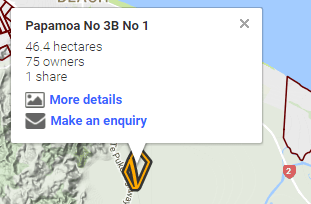Disclaimer
Manaaki Whenua accepts no liability for incorrect, misleading or untruthful descriptions of data and information displayed on this web site.
Manaaki Whenua accepts no liability for any quality problems with data and information available at this web site nor liability for defective map projections.
Manaaki Whenua is not liable for any action you may take as a result of relying on any information provided on this website.
Manaaki Whenua is not responsible for any information contained on sites which this website provides links to, nor any third party content which can be accessed through this website. The inclusion of any link to a website is not an endorsement of the linked site.
You agree that obtaining of any material through the use of this website is at your own risk and that Manaaki Whenua has no liability to you in respect of such material or the effects of such material.
While every effort has been made to ensure the accuracy of this publication, because the information is generalised, its accuracy cannot be guaranteed. Covenants such as Ngā Whenua Rāhui, or whenua classifications of Tapu, Maori Reservation or a historical reserve have been omitted from this publication. The publication is intended to provide general information to land owners. Specific advice from qualified specialists should be sought before undertaking any action following information received from this website. No liability is assumed by Manaaki Whenua for any losses suffered directly or indirectly by any person relying on the information contained in this publication.
To the maximum extent permitted by law Manaaki Whenua shall not be liable (whether for breach of contract, of these terms, or negligence or in any other tort or for any other common law or statutory cause of action arising in relation to these terms) for any loss of profits, exemplary or special damages, loss of sales, loss of revenue, loss of goodwill, bargain or opportunity or loss of anticipated savings resulting from you access to, or use of, or inability to use this site and it content, loss of any software or data, loss of use of computer equipment, software or data, loss of or waste of management or other staff time or for any direct, incidental, consequential or indirect or special loss, however arising.
